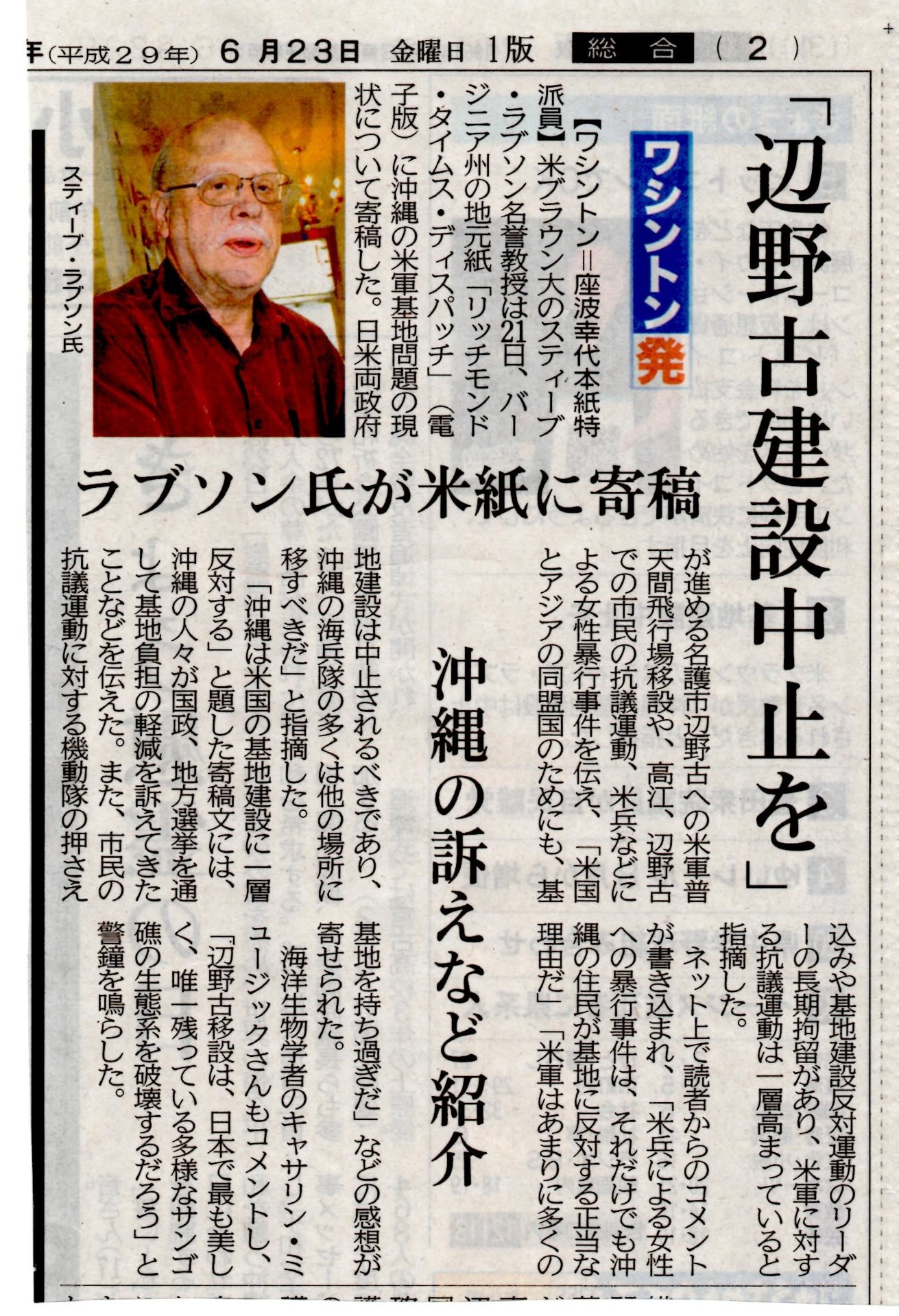
Steve Rabson column: Okinawans resist the construction of yet another U.S. base.
Little noticed in the United States, one item in the joint statement by President Donald Trump and Japan’s Prime Minister Shinzo Abe at their February meeting was headline news in Okinawa. It specified the construction of a U.S. airbase there. Seventy-four percent of the total U.S. military presence in Japan is crammed into this small island prefecture with 0.1 percent of the nation’s land area and less than 1 percent of its population.
Okinawans have expressed their opposition to this disproportionate burden by voting overwhelmingly for candidates demanding base reductions in local and national elections, by holding mass protest demonstrations, and by filing lawsuits against what they see as the discriminatory policy of the U.S. and Japanese governments.
The past year has seen growing resistance to the U.S. military presence in Okinawa with daily demonstrations, violent crackdowns by Japanese riot police, and lengthy detentions of protest leaders.
Opposition has succeeded in delaying for two decades the planned construction of the airbase in the seacoast village of Henoko announced by the two governments in 1996.
Residents say the stationing of troops and aircraft, including the accident-prone Osprey aircraft, would subject them to constant noise and environmental pollution of the land and sea, as well as the risks of deadly accidents and crimes.
In May 2016, a former Marine, employed at the time by the U.S. military, was charged with the rape and murder of a 20-year-old Okinawan woman in Uruma City. This came only four months after a U.S. sailor was charged with the rape of a woman in Naha, Okinawa’s capital city.




















